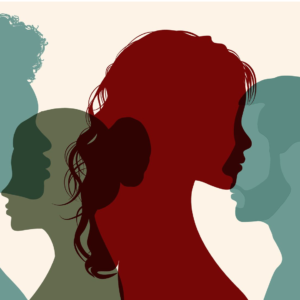By Dr. Ken Broda-Bahm:

It’s probably one of the most unfair biases, but also one of the most ingrained. Human beings prefer attractive people over unattractive people, and that is likely tied to our evolutionary biology. Referred to sometimes as “lookism” the bias confers a number of advantages on those who are socially perceived to be attractive. Ultimately, it boils down to much more than just a preference in partners. There is also a “halo effect” that creates a tendency to attribute a wide variety of other positive traits to those who are viewed as attractive. They’re seen as being more socially competent, dominant, in better mental health, and more intelligent. Past research has shown that they’re less likely to be convicted and more likely to be seen as credible witnesses in court.
Based on a new study, the attractive are also seen as having greater moral virtue. Researchers (Klebl et al., 2022) tested more than 1200 American research participants who viewed images from a database paired with moral and non-moral traits, and were then asked how likely it is that that the depicted individual has the identified trait. They found that the most attractive faces within each gender and ethnicity were more likely to be associated with moral traits, and this positive halo mattered more to traits that are moral (like being sympathetic) than non-moral (like being organized). This additional support for the “beauty is good” stereotype underscores the advantage that an attractive party or witness might have in a courtroom. Jurors and judges are able to get a long look at a party or a witness, and are certainly able to look beyond the pretty face to consider the full weight of facts and testimony. At the same time, first impressions do matter. In this post, I’ll take a look at the moral advantage of attractiveness and how litigants and witnesses ought to address it.
Work With What You’ve Got
Practically, the findings on “lookism” reinforce the natural intuition that it is good to present yourself well when you are in court and testifying. It isn’t just a matter of conforming to the formal norms, but is also a matter of building the best possible first impression with those who will be deciding your case. When witnesses ask me what they should wear for trial or deposition testimony, I will say, “Wear something you like, and something you feel you look good in.” Not only will you be more comfortable, but you will also be more confident, and that will help your testimony as well. Also, pay attention to hair, face, and general grooming. If you look and feel good, you will make a better impression.
Look at Other Moral Foundations
One important truism in legal persuasion is that first impressions matter, a lot, but they don’t necessarily determine the final verdict. Attractiveness is a matter of first impressions and not final outcomes. So while those who fare better in the looks department might get an initial boost in favorable attribution, that does not mean that this impression will survive your cross-examination or your case. Same goes for relying on the attractiveness of those on your own side. In addition to the “lookism” research, there is also research showing that individuals tend to center longer-term evaluations on a number of durable moral foundations.
-
- Harm/Care: Does the person value kindness and the protection of the vulnerable?
- Fairness/Reciprocity: Does the person promote equal treatment and justice?
- Authority/Respect: Does the person follow rules, contribute to social order?
- Ingroup/Loyalty: Does the person show faithfulness to their most relevant groups?
- Purity/Sanctity: Does the person promote what is pure or sacred?
Note that not all of these are valued equally, especially across the political spectrum, but they all serve as moral foundations for most people. The bottom line is that humans will be human: We are drawn to attractiveness and likely to put it on a pedestal in ways that are not strictly logical. But we’re also likely, particularly in a courtroom, to want to consider the larger picture as well.
____________________
Other Posts on Appearance:
- Account for “Lookism”
- Web-Conferencing? Don’t Let Your Energy Zoom Away
- Instruct the Jury Accurately on Witness Credibility
____________________
Klebl, C., Rhee, J. J., Greenaway, K. H., Luo, Y., & Bastian, B. (2022). Beauty goes down to the core: Attractiveness biases moral character attributions. Journal of Nonverbal Behavior, 1-15.